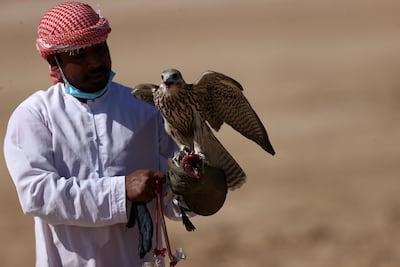In the UAE, we are fairly good at preserving cultural heritage, at least our buildings. There is room for improvement, but the concept of protecting it is well-established. There is, however, more to cultural heritage than buildings.
Unesco has a category for "Intangible Cultural Heritage", which it defines as "the practices, representations, expressions, knowledge, skills – as well as the instruments, objects, artefacts and cultural spaces associated therewith – that communities, groups and, in some cases, individuals recognise as part of their cultural heritage".
Several elements of the country's culture have been formally inscribed on Unesco's World Heritage List for Intangible Heritage, or have been nominated. These include the ancient aflaj water irrigation system, along with the oral traditions and skills related to it, Al Sadu (traditional weaving), the Ayyala dance and falconry. There is, however, more that is worthy of attention.

I recently talked to an Emirati friend who is deeply passionate about the country’s traditional culture, and the way in which elements of it are, imperceptibly but rapidly, being eroded.
What is now widely portrayed as being local traditional music, he said, has actually been heavily influenced by musicians who arrived here from other countries. The rhythm, the melodies, the use of drumming, all, he said, now reflect their influence. In schools, "Emirati" music played to students, he said, often has couplets in a Nejdi (Saudi) metre (wazin), or rhythmic structure, and with an Iraqi beat.
In the past, it was different. Our own local songs could be easily identified, not lost amid a mish-mash of regional influences. The songs of pearl-divers could be distinguished from those of desert-dwellers, or from those of seamen who voyaged to India or to East Africa, picking up melodies on their journeys.
In poetry too, he said, things have changed. Whereas traditional Emirati poetry used a short metre, now longer metres have come to predominate.
He and a few others, in the midst of their working lives, do what they can to record the music and the poems of the past. But it is, at best, an uphill struggle.
Many of the finest exponents of such music and poetry are amongst our older citizens. Their numbers decline inexorably every year. If the knowledge that resides with them is not recorded, while there is time, it will be irreversibly lost.
Amongst much else, my friend has also made a study of various elements of Emirati attire, such as the different styles of kandura, or the decorations on the hilts of traditional khanjars. There are small, but significant, differences. Another topic we have discussed is the intricate decorations that once used to surround little windows. In all of these, there is not just the evidence of the old traditional ways, but also indications of the original sources of inspiration, often reflecting the country's widespread international connections.
From my side, I offered a few thoughts about language. That is not just a matter of accent, although there are clearly distinguishable variations. In the past, every region might have a different word for animals or for common birds, such as the curlew. In Dibba, Ras Al Khaimah and the islands of the Western Region, the local name might be different. One wonders if local children still remember and use those old names.
Our modern education system teaches Arabic with a standardised vocabulary – and not an Emirati one. Couple that with Arabic drama and films produced elsewhere in the Arab world, and those peculiarities of our local language, quite naturally, get swamped. Indeed, if we look at other countries, regional accents and the use of words that are traditionally found only in one particular area are, first, sneered at and then, eventually, may go out of use.

The key challenges in trying to preserve these things, as something living, not preserved in aspic, are two-fold.
First, our standardised educational system can contribute to a loss of our varied Emirati dialects, music and song, while the older people who know and use them pass on. That can be a gradual process. This is a phenomenon that has impacted societies around the world.
Secondly, as society becomes more urbanised, the old ways are no longer as relevant to daily life. What remains is often little more than a pastiche of the original. Furthermore, in the drive to attract tourism, sometimes new things are introduced and sold as part of a simplified "Arab culture" that could apply equally to Morocco or to Egypt or to the Gulf.
That is, perhaps sadly, inevitable, as the world as a whole, including the region, becomes more inter-connected.
There is still scope for more effort to be made to record and to cherish the dialects, the dress, the tools and the songs of old Emirati society. Sterling efforts have been made to make a start on this, but both individual and systematic efforts should be amplified.
I know that our universities are often driven by a desire to produce graduates for the job market, and that is understandable. But perhaps there is also room for more attention to be paid to recording, studying and teaching these elements of our unique local society… while there is time.
Peter Hellyer is a UAE cultural historian and columnist for The National


